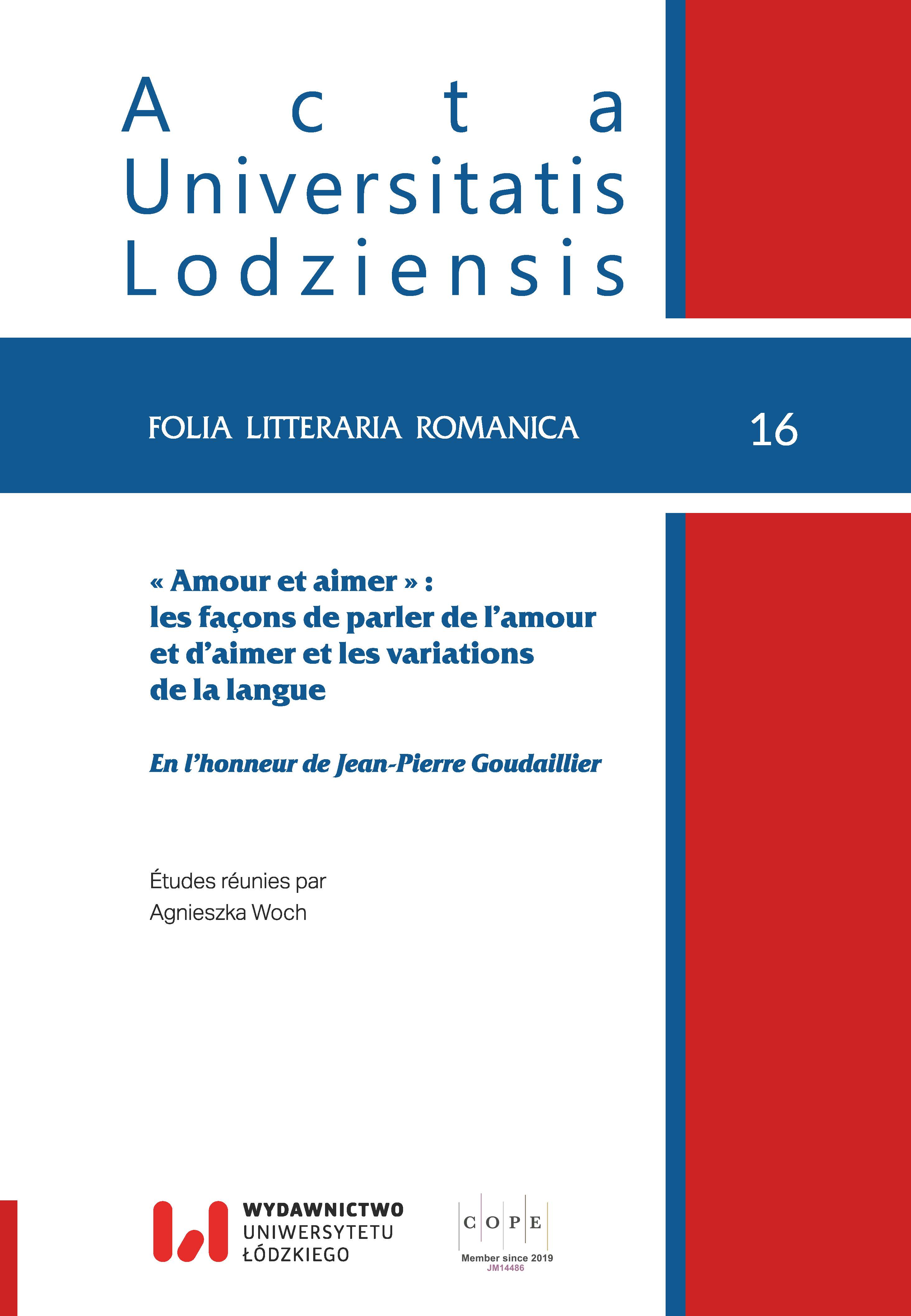The Argumentative Function of the doxa in the Discourse on the Macron Couple
DOI:
https://doi.org/10.18778/1505-9065.16.15Keywords:
stereotype, doxa, argumentation in discourse, stigmatization, relationshipAbstract
By analyzing a variety of samples of the digital discourse on the French presidential couple, the aim of this article is to determine how certain stereotypes concerning intergenerational love are invoked in order to argue against the policy of Emmanuel Macron. Couples with a significant age difference in favor of women violate current doxa, because the relationship where the man is older is “normal” or “imaginable”. The Macrons are thus stigmatized and become the target of discriminatory discourse which mainly attacks the president’s wife because of her age and physical appearance. The thesis is that the mentioned stereotypes are mobilized for ad personam argumentation which aims to discredit the President of the Republic. The “anti-doxic” character of his relationship with Brigitte, put in the foreground by his antagonists, acts as an instrument of delegitimization of his person and, in the process, of his policy. In the analyzed case, the ad personam argumentation is carried out in a very peculiar way that one could call ad hoc an “ad coniugem” argumentation.
Downloads
References
AMOSSY, Ruth (1994), « Stéréotypie et argumentation » in Le Stéréotype. Crise et transformations (A. Goulet dir.), Caen, Presses universitaires de Caen, p. 47-61
Google Scholar
DOI: https://doi.org/10.4000/books.puc.9700
AMOSSY, Ruth (1999), « Israël et les juifs dans l’argumentation de l’extrême droite : doxa et implicite », Mots. Les langages du politique, no 58, p. 79-100
Google Scholar
DOI: https://doi.org/10.3406/mots.1999.2526
AMOSSY, Ruth (2006 [2000]), L’Argumentation dans le discours, Paris, Armand Colin
Google Scholar
AMOSSY, Ruth, HERSCHBERG PIERROT, Anne (1997), Stéréotypes et clichés : langue, discours, société, Paris, Nathan
Google Scholar
ANGENOT, Marc (2013), Rhétorique de la confiance et de l’autorité, Montréal, Discours social
Google Scholar
BOURDIEU, Pierre (1998), La domination masculine, Paris, Seuil
Google Scholar
BOZON, Michel (1990), « Les femmes et l’écart d’âge entre conjoints : une domination consentie », Population, no 2, année 45, p. 327-360
Google Scholar
DOI: https://doi.org/10.2307/1533376
BOZON, Michel (1991), « Les femmes plus âgées que leur conjoint sont-elles atypiques ? », Population, no 1, année 46, p. 152-159
Google Scholar
DOI: https://doi.org/10.2307/1533615
COENEN-HUTHER, Josette (2001), « Dominance et égalité dans les couples », Cahiers du genre, no 30, p. 179-204
Google Scholar
DOI: https://doi.org/10.3917/cdge.030.0179
GAUTHIER, Gilles (2011), « L’argument ad hominem en communication politique » in L’Argumentation (N. D’Almeida coord.), Paris, CNRS Éditions, p. 77-95
Google Scholar
DOI: https://doi.org/10.4000/books.editionscnrs.14989
HARDING, John (1968), « Stereotypes » in International Encyclopedia of the Social Sciences (D. L. Sills éd.), vol. 15, New York, The McMillan Cie & The Free Press, p. 259-262
Google Scholar
HOUDEBINE-GRAVAUD, Anne-Marie (1995), « Des femmes dans la langue et les discours », Cahiers des Annales de Normandie, no 26, p. 385-398
Google Scholar
DOI: https://doi.org/10.3406/annor.1995.2284
MIGNOT, Jean-François (2010), « L’écart d’âge entre conjoints », Revue française de sociologie, no 51/2, p. 281-320
Google Scholar
DOI: https://doi.org/10.3917/rfs.512.0281
ROSIER, Laurence (2017), De l’insulte… aux femmes, Bruxelles, 180° éditions
Google Scholar
SCHAPIRA, Charlotte (1999), Les stéréotypes en français. Proverbes et autres formules, Paris, Ophrys
Google Scholar
SLAKTA, Denis (1994), « Stéréotype : sémiologie d’un concept » in Le Stéréotype. Crise et transformations (A. Goulet dir.), Caen, Presses universitaires de Caen, p. 35-45
Google Scholar
DOI: https://doi.org/10.4000/books.puc.9699
YAGUELLO, Marina (1978), Les mots et les femmes. Essai d’approche socio-linguistique de la condition féminine, Paris, Payot
Google Scholar
Downloads
Published
How to Cite
Issue
Section
License

This work is licensed under a Creative Commons Attribution-NonCommercial-NoDerivatives 4.0 International License.














